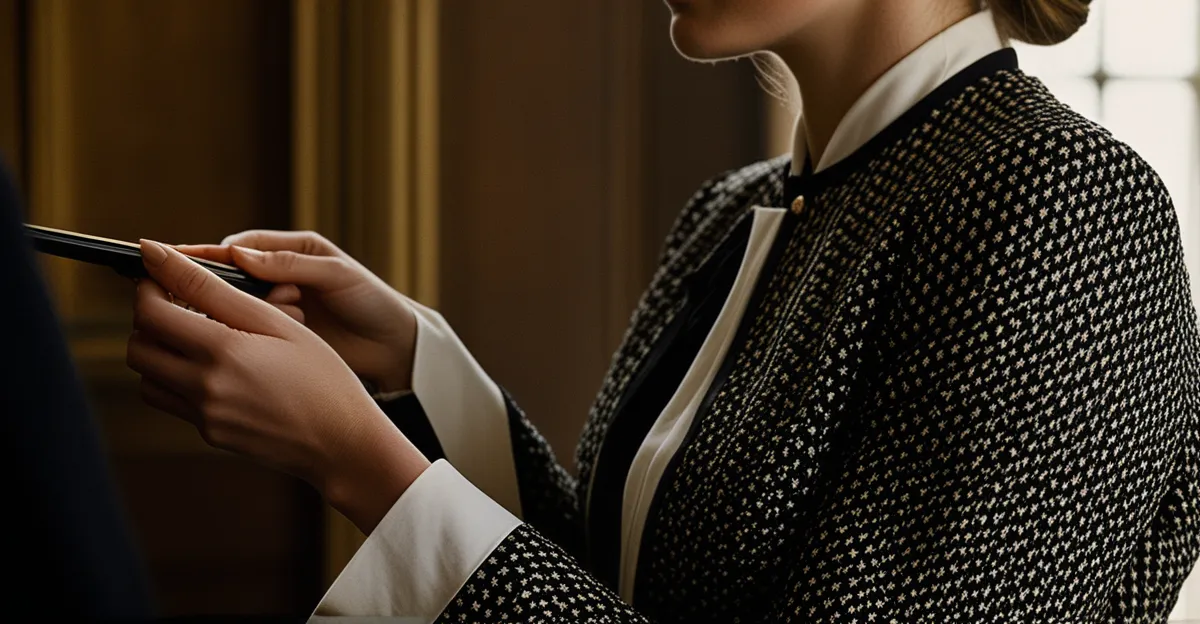The Enduring Impact of Historical Eras on UK Women’s Fashion
Historical eras have profoundly shaped UK women’s fashion history, creating a rich tapestry that informs today’s style choices. From the strict forms of the Victorian age to the revolutionary cuts of the 1920s and the practical designs born from wartime necessity, these periods highlight an evolving dialogue between culture and fashion.
The Victorian and Edwardian periods laid the groundwork with their emphasis on silhouette, modesty, and detailing, steering fashion towards a refined yet practical direction. This influence persists in modern UK women’s fashion history, where refined tailoring and delicate embellishments continue to surface in contemporary collections.
This might interest you : How Can UK Women Redefine Modern Fashion Trends?
The 1920s introduced a liberating shift with the flapper style, marking a definitive break from restrictive designs to looser fits and shorter hemlines. The ethos of social liberation translated into garments characterized by art deco nuances, drop waists, and a spirit of experimentation that threads through modern partywear and casual attire alike.
World War II catalyzed a transformation towards functionality and resourcefulness in fashion. The scarcity of materials and the utilitarian demands of the period forged styles that prioritized practicality without sacrificing style—utility clothing and the make-do-and-mend philosophy underpin this evolution. Today’s minimalist, utilitarian looks are direct descendants of this era’s innovation.
Also to read : What Are the Latest UK Women’s Fashion Trends to Watch Out for This Season?
Postwar prosperity brought the resurgence of femininity and glamour with influences such as Dior’s New Look, emphasizing structured elegance and richer fabrics. Elements like full skirts and fitted jackets still echo in contemporary UK women’s wardrobes, reflecting a sustained appreciation for luxury balanced with wearability.
Together, these historical influences create a layered legacy that continues to inform and inspire the contemporary UK women’s fashion landscape. Designers consistently reinterpret these eras by blending traditional motifs with modern aesthetics, demonstrating the fashion evolution intrinsic to the UK’s sartorial identity. This ongoing synthesis of past and present ensures that history remains a vital force in shaping modern styles today.
Victorian and Edwardian Foundations in Contemporary Fashion
The Victorian fashion influence remains pivotal in shaping modern UK womenswear. Characterized by its emphasis on structure and modesty, Victorian styles introduced signature silhouettes that continue to resonate in contemporary tailoring. High necklines, corseted waists, and intricate lace detailing from this period have inspired modern designers to incorporate subtle opulence without sacrificing wearability.
Moving into the Edwardian era, the fashion legacy expanded upon Victorian foundations by introducing a lighter, more fluid approach while maintaining refined elegance. Edwardian fashion is notable for its delicate fabrics like silk and chiffon, as well as embellishments such as embroidery and lace appliqués, which are recurrent motifs in today’s formal and bridal collections. The Edwardian emphasis on practicality, combined with feminine sophistication, still informs the UK fashion heritage, blending graceful lines with functional design.
The transition from Victorian to Edwardian styles marks a crucial phase in the UK women’s fashion history, representing a balanced move towards practicality. Modern styles reflect this evolution by marrying tailored precision with modest yet intricate detailing. Contemporary collections often echo these eras by reviving lace trims, structured jackets, and high collars, demonstrating a continuous dialogue with the past.
The influence of historical trends from these periods underscores a commitment to craftsmanship and quality fabrics, which remain central to today’s fashion evolution in the UK. This historical foundation supports ongoing innovation while preserving a distinct sense of heritage, ensuring that classic elements are thoughtfully reinterpreted to suit modern tastes and lifestyles.
1920s Flapper Style and the Rise of Modernism
The 1920s UK fashion epitomizes a pivotal moment in UK women’s fashion history, marked by the emergence of the flapper style which symbolized newfound social freedom and a decisive break from previous constraints. This era’s influence of historical trends is evident in its revolutionary silhouettes: shorter hemlines, dropped waists, and loose cuts that allowed women unprecedented mobility and self-expression. These modern styles contrasted sharply with the corseted and structured attire of earlier periods, representing both a cultural and sartorial shift.
The flapper influence brought more than just a change in garment length; it introduced art deco embellishments that added geometric flair and visual dynamism. Popular motifs such as beading, sequins, and embroidery reflected the era’s enthusiasm for innovation and luxury. This blend of glamor with practicality continues to inspire contemporary UK partywear collections, where designers echo the flapper’s bold spirit through layered textures and metallic accents.
Furthermore, the 1920s ushered in early forms of gender-fluid tailoring, challenging the rigid gender norms entrenched in fashion. Boxy silhouettes and relaxed fits softened traditional female shapes and resonated with the modernist movement, fostering an aesthetic that valued both simplicity and elegance.
In summary, the fashion evolution catalyzed by the 1920s flapper style still reverberates in today’s UK women’s fashion. Its legacy informs modern styles that embrace both freedom of movement and decorative complexity. The interplay of historical innovation and current trends underscores the enduring vitality of the 1920s as a defining moment in the ongoing narrative of UK women’s fashion history.
The Wartime Wardrobe and Functional Fashion
World War II brought a profound shift in UK women’s fashion history, where practicality became paramount amid material shortages and social upheaval. The influence of historical trends during this period is most clearly seen in the emergence of utility clothing, a style born from strict rationing that emphasized durability, simplicity, and versatility. Garments were designed to conserve fabric yet remain functional and flattering, marking a critical moment in the fashion evolution from ornamental to pragmatic attire.
Utility dresses, characterized by structured tailoring and limited adornment, dominated war-era wardrobes. This reflected both government regulations and women’s increasing participation in the workforce, requiring clothing that could withstand daily labor. Alongside dresses, trousers became widely accepted as practical attire for women, signaling a significant break from previous gender norms in fashion. The wartime ethos also fostered the “make-do-and-mend” philosophy, encouraging repair and reuse rather than consumption, which imbued fashion with a spirit of resourcefulness still appreciated in modern sustainable design discussions.
Today’s modern styles in the UK often echo this legacy. Minimalist and utilitarian fashion brands draw heavily on the wartime silhouette’s clean lines and functional aesthetic. Practical fabrics and streamlined cuts harken back to this era’s necessity-driven innovation, demonstrating the enduring impact of war on style. Designers integrate these historical cues with contemporary materials and technologies, proving that the fashion evolution sparked by WWII continues to shape how women’s clothing balances functionality with form.
Postwar Prosperity and the Age of Glamour
The 1950s UK fashion era marked a pivotal moment in UK women’s fashion history, characterized by a resurgence of femininity and elegance following the austerity of wartime. Central to this period was Christian Dior’s New Look influence, which brought an emphasis on structured silhouettes, nipped waists, and lavish fabrics. This represented a significant fashion evolution from the utilitarian styles of the war years to designs exuding luxury and refinement.
The influence of historical trends from the postwar era is especially visible in enduring iconic pieces such as full skirts, fitted jackets, and soft pastel palettes. These elements created a look that celebrated opulence while retaining wearability, a balance that continues to inspire modern styles in the UK today. Designers often revisit this blend of structure and femininity, integrating historical motifs with contemporary fabrics and cuts.
Moreover, the postwar period saw an expansion in consumer culture, which shaped how women interacted with fashion. The rise of ready-to-wear collections and increased accessibility to stylish clothing fueled demand for designs that combined glamour with practicality. This legacy remains palpable in current UK womenswear, where special occasion dressing and everyday fashion alike reflect the postwar commitment to elegance and sophistication.
Overall, the fashion evolution initiated during this prosperous era has left a lasting imprint on the UK women’s fashion history, bridging the gap between past grandeur and present-day innovation. The continued reverence for structured elegance and rich detailing underscores the postwar period’s role as a cornerstone for contemporary UK fashion narratives.
Cultural Shifts and the Youth Revolutions of the 1960s–1980s
The 1960s UK fashion scene marked a significant cultural shift, as youth culture emerged with unprecedented influence over mainstream style, accelerating the ongoing fashion evolution in the UK. This period witnessed the birth of the mod fashion movement, characterized by its embrace of miniskirts, bold geometric prints, and vibrant color palettes. The mod style was instrumental in democratizing fashion, making stylish, youthful clothing accessible to a broader audience and thus reshaping modern styles both on the high street and within designer offerings.
As social attitudes evolved, fashion became a vehicle for expressing rebellion and identity, culminating in the punk and new wave movements of the late 1970s and early 1980s. Punk fashion—defined by its anti-establishment ethos—introduced elements such as safety pins, leather jackets, and DIY customization, which stood in stark contrast to prior polished aesthetics. This raw, edgy style profoundly impacted the UK women’s fashion history by challenging norms and encouraging experimental, eclectic looks. The influence of punk aesthetics persists today in contemporary streetwear, where its ethos of individualism and boundary-pushing continues to inspire.
The influence of historical trends during these decades is noteworthy for how freely styles were borrowed, reshaped, and combined, emblematic of a broader cultural liberation. For instance, mini skirts from the 1960s still circulate in current wardrobes, while punk’s DIY spirit informs a wide array of modern styles that mix high fashion with street culture. This era underscored fashion’s role in reflecting and propelling youth-driven social change, thereby cementing its lasting impact on UK women’s apparel.
In sum, the fashion evolution from the 1960s to the 1980s represents a dynamic period where cultural revolutions and youthful energy redefined the contours of style. The legacy of mod and punk remains deeply embedded in contemporary designs, illustrating how historical movements continuously shape and invigorate UK women’s fashion today.
Contemporary Synthesis: How History Shapes Today’s UK Women’s Fashion
The ongoing fashion evolution in the UK is a vivid testament to how historical trends continuously inform and inspire modern UK women’s fashion. Designers frequently draw from the rich tapestry of the past, blending enduring motifs from the Victorian, Edwardian, 1920s, wartime, postwar, and youth revolution eras with contemporary materials and cutting-edge technologies. This interplay results in collections that honor heritage while pushing stylistic boundaries.
One striking aspect of this synthesis is how designers reinterpret classic silhouettes and embellishments to suit today’s lifestyles. For example, Victorian-inspired high collars and lace detailing appear alongside streamlined tailoring in ready-to-wear lines, offering a fusion of modesty and modern practicality. Similarly, the flapper era’s relaxed cuts and art deco ornamentation resurface in partywear, where designers combine vintage glitz with contemporary comfort, reflecting the lasting influence of historical trends.
Beyond aesthetics, the fashion evolution UK also embraces the sustainable values rooted in the wartime make-do-and-mend philosophy. This heritage encourages modern brands to prioritize durability, multifunctionality, and thoughtful design—principles that resonate strongly in today’s eco-conscious market. Utility-inspired garments championed during WWII find new life in minimalist urban collections that balance form and function seamlessly.
The digital age further accelerates this process by enabling rapid reinterpretation and dissemination of historical references, making vintage-inspired styles more accessible. Additionally, technological advancements in fabric innovation allow the integration of performance features without compromising the sophisticated details drawn from the UK’s sartorial past.
Ultimately, the cyclical nature of fashion is evident in how historical legacies are not merely replicated but reimagined. By weaving together the old and new, contemporary UK women’s fashion enriches its narrative and offers diverse styles that accommodate both tradition and innovation, reaffirming the importance of history as a dynamic foundation of modern expression.


